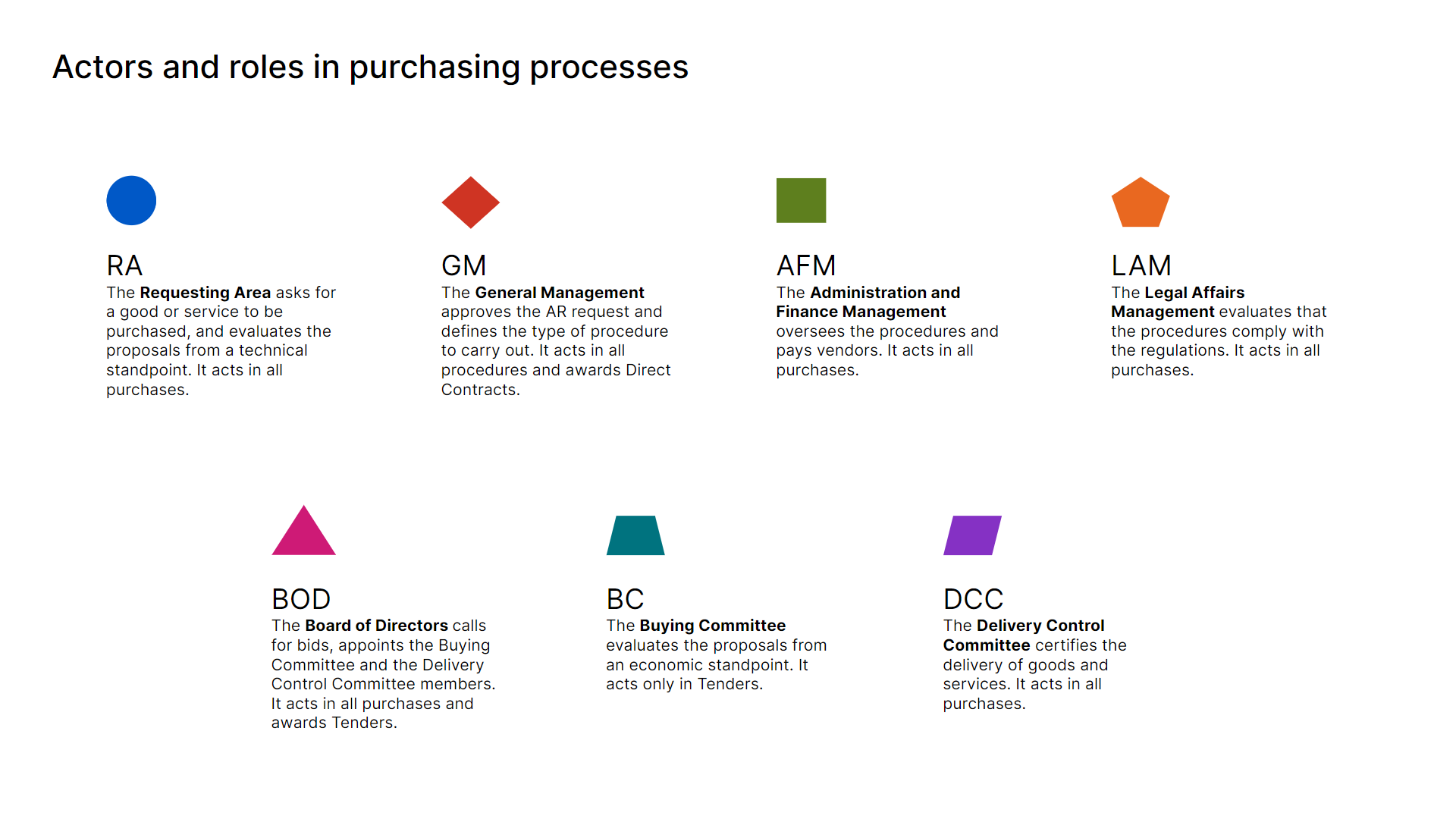Case study
We helped the Argentinian government agency Télam explain its procurement process to employees in a human-centered way.
Télam had redesigned its purchasing process, but the new workflow hadn’t been fully adopted by staff. Sourcing operations involved more than 200 people across different departments (plus bidding companies), and errors or delays affected the supply chain of an organization with over 1,000 employees.
Support documentation was split between a written guide and a flowchart embedded in a spreadsheet. Users struggled to navigate two separate files and found the flowchart hard to read.
Some user quotes:
Our goal was to make it easy for employees to understand what each area needed to do, and when. Because users had different professional backgrounds and literacy levels, accessibility and inclusion were key.
During the project, we noticed misaligned stakeholder expectations about the content’s purpose. To avoid overloading a single content asset and diluting its clarity, we worked with the client to refine the scope. We agreed to focus solely on explaining the purchasing process, leaving out system implementation details and related procedures, which would be addressed in separate tutorials.
We edited the process guide using plain language and created new flow visualizations tailored to two use cases we uncovered during discovery: people who read on-screen and those who print materials and pin them on the wall.
Our flow analysis also revealed opportunities to improve the process itself, such as reordering tasks to provide one area with key information sooner and removing redundant steps. The client agreed to implement those adjustments.
We also included the date of publication and revision in the docs to improve content governance, since planned maintenance mechanisms are essential to keep information usable and ensure the asset remains valuable over time.

Due to a cognitive phenomenon known as processing fluency, our brains perceive information as more credible and actionable when it’s easier to read. That perceived ease can be designed by deliberate choices in syntax, terminology, layout, and visual hierarchy.
When instructions are hard to understand, even well-designed processes fail. Communicating procedures in plain language and with usability in mind is key to operational success.
The faster employees can turn documentation into shared mental models, the faster your organization can deliver consistent, reliable service.
